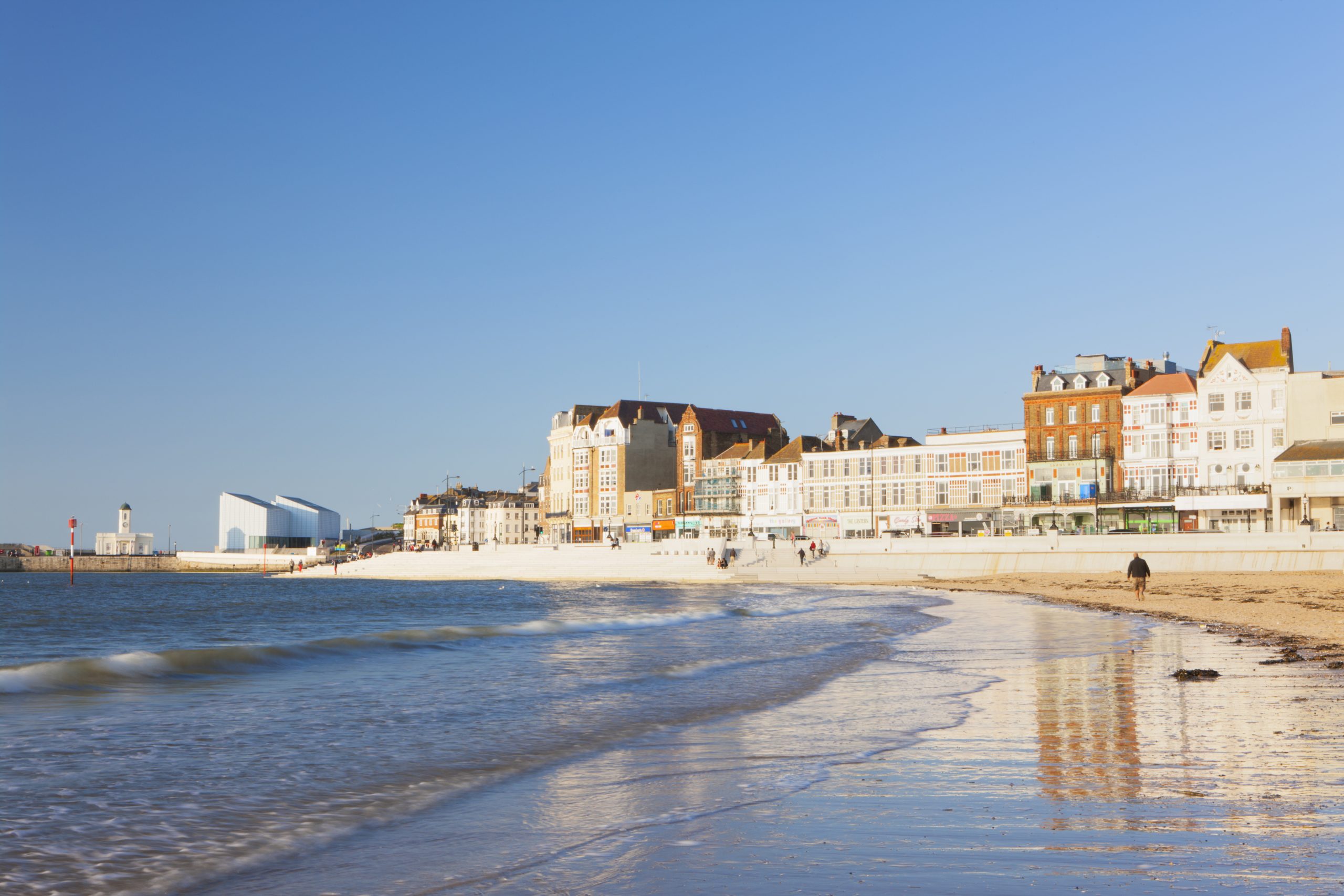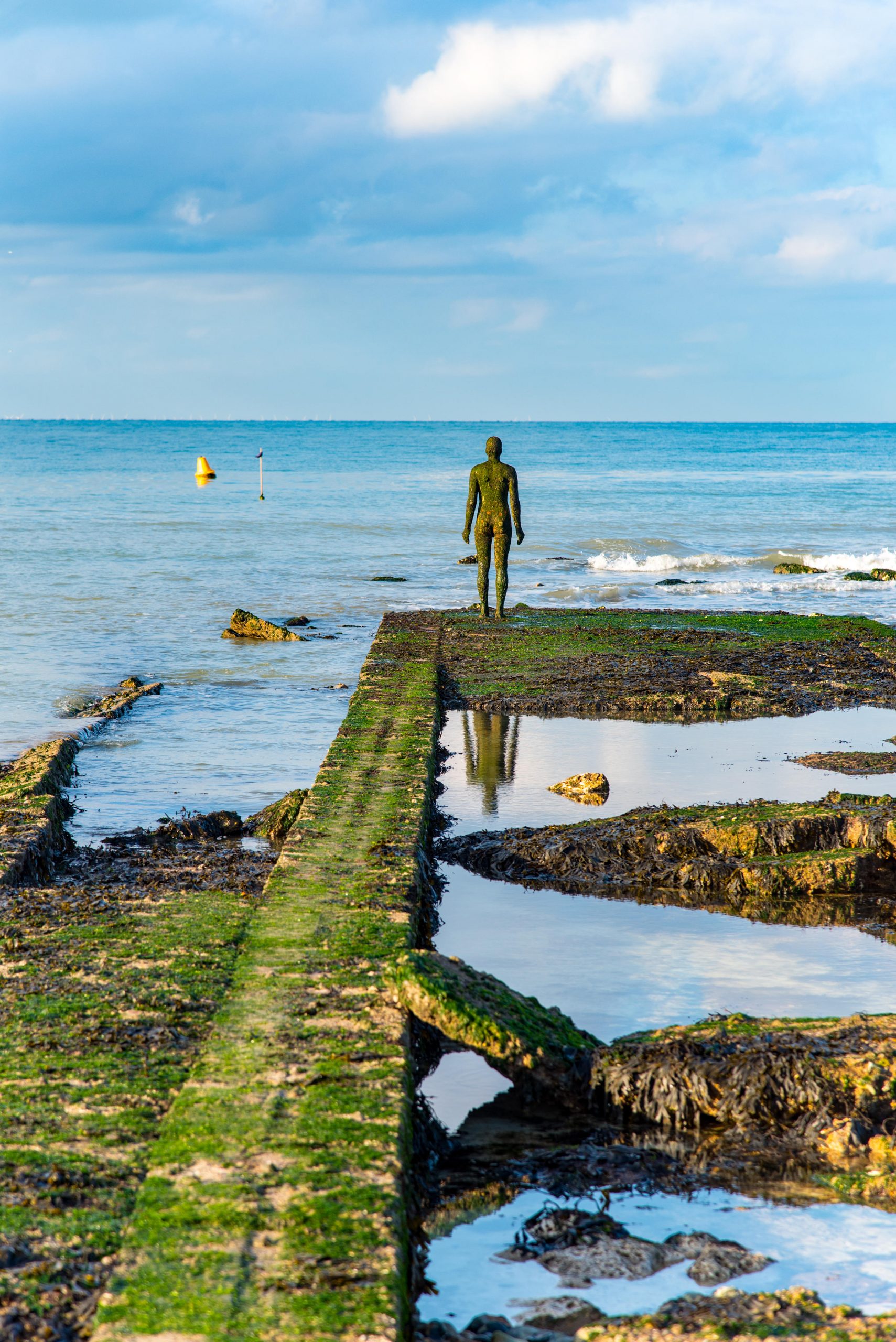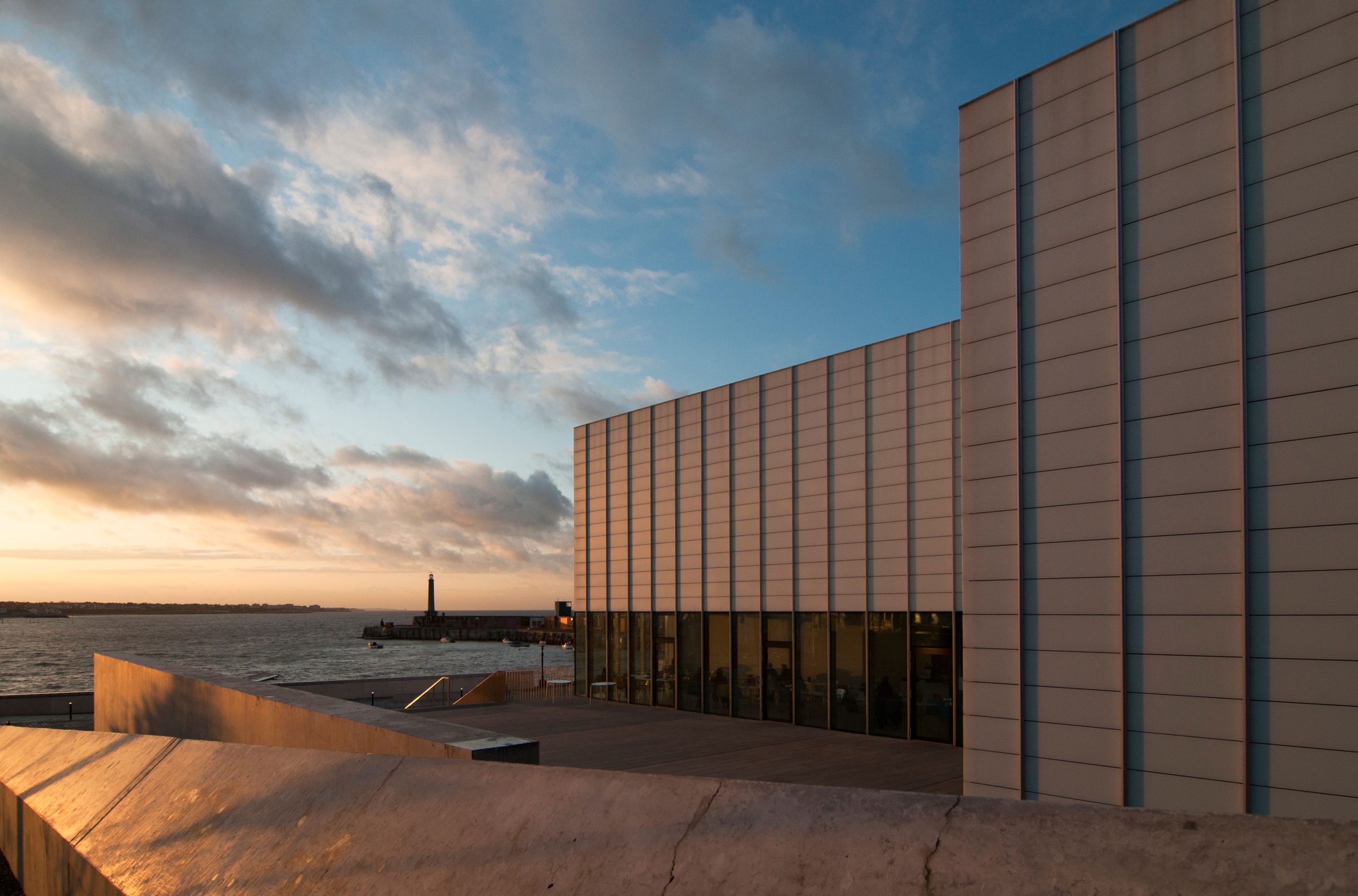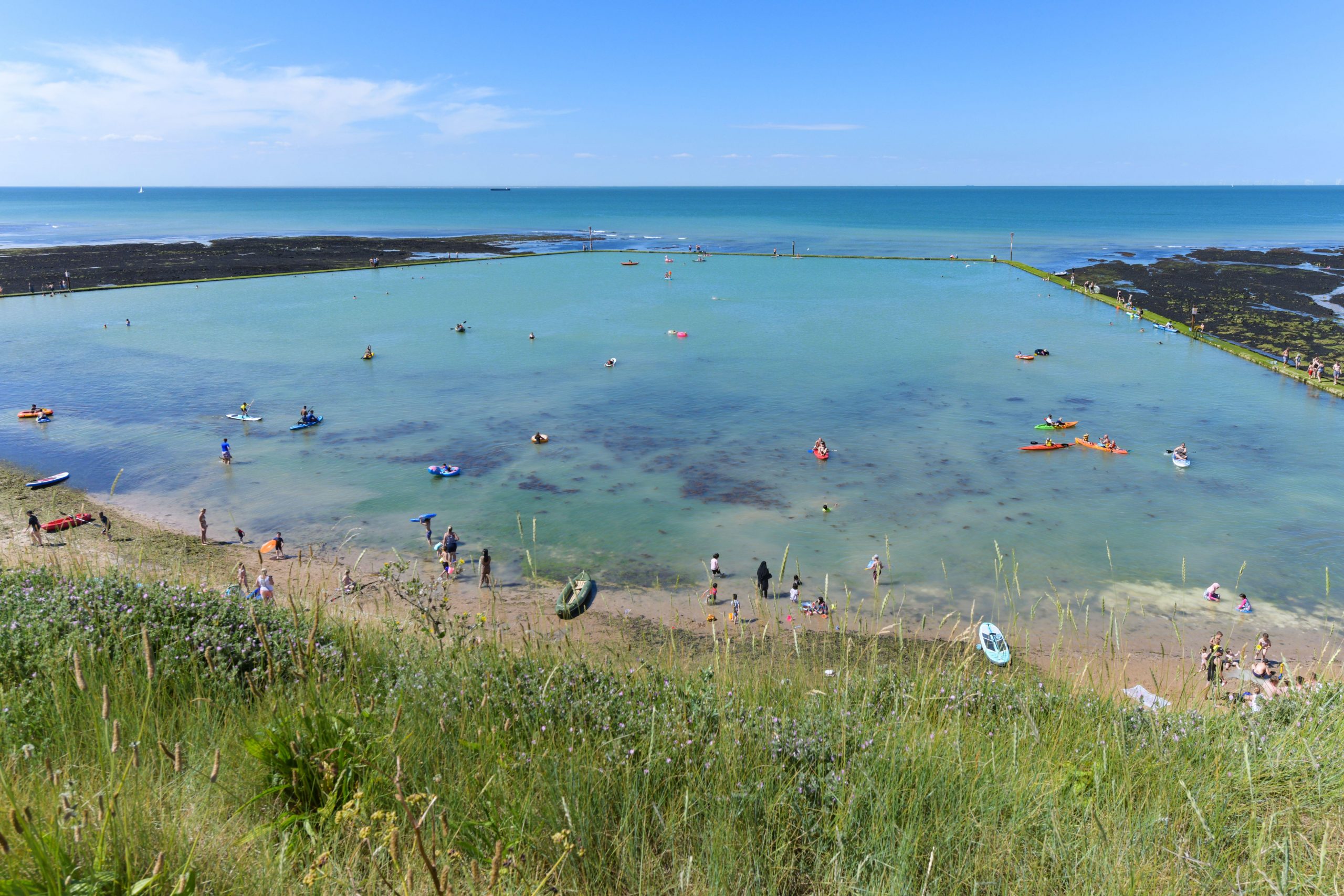
Along Margate’s seafront, morning joggers criss-cross with swimmers en route to Walpole Bay tidal pool and the outdoor sauna installed by natural skincare brand Haeckels.
Outside the Turner Contemporary gallery, a semi-submerged Antony Gormley sculpture is revealed by low tide and a neon by Margate native Tracey Emin adorns the tourist information centre. And across the charismatic Old Town, buzzy nascent businesses, from restaurants and cafes to bakeries, bookshops and vintage boutiques, are opening their doors.

This storied seaside town on the north-eastern corner of the Kent coast is thriving once more. Since the early 1800s, when British painter J.M.W. Turner would visit on the paddle steamer from London, transfixed by the town’s spectacular sunsets, its fortunes ebbed and flowed like the tides that lap the sandy shores.
Wealthy London émigrés seeking the salt air’s restorative qualities transformed this fishing town into a fashionable resort during the 19th century, with grand Georgian terraces springing up along the seafront — and the town’s popularity gathered pace with the arrival of the train line. Yet the 1960s package-holiday boom saw many holidaying overseas instead, with the decline that set in by the turn of the millennium — evident in the boarded-up guest houses and fast-fading grandeur — appearing terminal.

But against these odds, the arrival of Turner’s namesake gallery (above) in 2011 — whose location initially seemed optimistic — has helped to inspire an unlikely comeback, with the past decade seeing Margate spring back to life, led by a creative, entrepreneurial community swelled by post-pandemic newcomers.
‘I often feel that people come to Margate on a mission to achieve something,’ says Robert Diament, director of the Carl Freedman Gallery, which relocated from Shoreditch to an expansive space in the former Thanet Gazette printworks in 2019. ‘When we first moved here, Margate felt both rebellious and loving. Everyone was putting on shows; people would come to our exhibitions and we’d go to theirs.’
His gallery is one of a number of venues in Margate providing platforms to creatives of all disciplines, recently joined by Tracey Emin’s art school and gallery space TKE Studios. ‘Maybe it’s the light, or the healing nature of the sea but there’s something about the town that attracts people,’ he says. ‘Moving here changed my perspective on life; I was so much happier and less distracted.’ Another newcomer he’s witnessed hitting their stride here is sculptor Lindsay Mendick, on the books at Carl Freedman, whose own gallery, Quench, offers funding and space for emerging talent.
Exquisite houses, the beauty of Nature, and how to get the most from your life, straight to your inbox.

Where the artists go, others often follow and this summer, the launch of two luxe hotels is further evidence of Margate’s reinvention. Overlooking Main Sands, No.42 is a smart boutique that places guests in the thick of the Old Town, while on Dalby Square, a conservation area in Cliftonville, Margate newcomer Will Jenkins has opened the artfully curated Margate House Hotel (above). After being drawn to the area by the ‘energy of the community’ — and cheaper property prices — he teamed up with an interior designer friend to transform a run-down former guesthouse into an intimate, warm-hued haven, with many of its nine rooms in sight of the sea.
Those same views also appealed to chef, and River Cafe alumnus, Daisy Cecil, who moved from London to run the kitchen at the Fort Road Hotel, perhaps Margate’s highest profile new hotel, which opened in 2022 courtesy of Frieze co-founders Matthew Slotover and Tom Gidley. ‘Coming here by train you pass fields full of apples, cherries and vines and that’s really inspiring,’ she says. Describing her menus as having an English heart with Italian influences, fresh fish, foraged sea vegetables and Romney Marsh lamb are among the highlights, depending on what’s in season. ‘It’s been a real adventure. I always enjoy looking to the land and sea, and listening to what comes back from local farmers. I think it’s important that food doesn’t travel too far and that we celebrate the local area.’
This ethos is mirrored across Margate’s burgeoning restaurant scene, where Angela’s holds a Michelin green star for its sustainably caught seafood, Sargasso, on the harbour arm, serves natural wine and small plates, often based upon what’s landed by Kevin the fisherman next door, and a hyped new opening is never far away.
For those with a nostalgic yearning for Margate’s past, the decades-old Manning’s seafood stall sells cockles and whelks outside the Turner, while, nearby, the queue for cod and chips at Pete’s Fish Factory starts from mid-morning. Penny arcades line the strip behind the Main Sands and Dreamland — the town’s Art Deco-fronted amusement park, which starred in Sam Mendes’ recent Empire of Light, remains one of the town’s star attractions.

Yet something has shifted, as subtly but indisputably as the tide, with a sense of pride returning to this far-flung corner of Kent. ‘Walking around the Old Town today you notice so many places with their own exhibition programmes or where self-taught artists make and sell work — it feels like an arty place to visit now and it didn’t before,’ says Mr Diament on the town’s recent evolution. ‘Without doubt the Turner Contemporary is the reason this all happened. And the foundations are so strong now. When I speak to artists from all over the world they have all heard of Margate.’
For more information on Margate and Kent, read Country Life's guide to the county, here.

